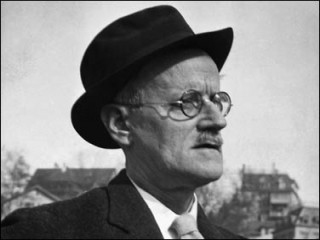
James Joyce biography
Date of birth : 1882-02-02
Date of death : 1941-01-13
Birthplace : Dublin, Ireland
Nationality : Irish
Category : Famous Figures
Last modified : 2010-05-12
Credited as : Writer and poet, Ulysses novel, Edith Rockefeller
Known as one of the most prominent, if not prolific writers of the 20 th century, James Joyce was able to expand, add to, and build upon already established genres of his time. In his most famous works, namely Ulysses and Finnegan’s Wake, Joyce established himself as a writer of epic tales filled with vivid portrayals of life, love, and art.
With ten siblings vying for an education, James Joyce was able to attend a private boarding school for some of his childhood. This sparked his imagination and his devotion to learning. His father was a wealthy man at that time, but soon drank himself and his family into poverty. Unable to attend his private education, young James was able to self-educate himself on borrowed books of his classmates and with the aid of his mother. However, within a couple of years, he and another brother won scholarships to attend a school in Dublin. While there, he decided he no longer believed in Catholic practices and thereafter did not return to the school, even though he was one of the top and most adored students.
Upon entering into the university in Dublin, he read widely and took part in literary and historical clubs of the time. By the time he was 18, he had already been published as a critic in the London Fortnightly review, which allowed him to see that he was gifted enough to make it as a writer. He was able to graduate from university with a degree in Latin in 1902, but he kept on writing, which was his main goal. After receiving his BA, he thought about becoming a doctor to support himself and his future family, while continuing his writing. But those studies waned and he instead went to Paris in order to pursue his career amongst other artists on the forefront of literature.
Back in Ireland, James Joyce met Nora Barnacle and while the two were never married due to their own beliefs about the ceremony based on religion, they left Ireland and had two children together. The two moved to Austria-Hungry and then went on to spend some time in Rome. While there, Joyce worked as a banker, but felt the job was wasting his time and keeping him from his first love – writing.
While in Zurich due to the Italian War, he worked even harder on Ulysses. He received a grant from one Edith Rockefeller McCormick and from the editorial team of Egoist magazine, and with some significant financial backing, he was able to not only care for his family, but also devote his energies full time to his writing. During this time, he also searched for a printer for A Portrait of the Artist as a Young Man. It was published by Weaver under the English Egoist Press and released in the United States before it was banned there. Ulysses was later published by Shakespeare and Company in Paris and received great critical acclaim. Ulysses by James Joyce has gone down in history as one of the greatest novels ever written for its interior monologue that develops the story, which helped to set the precedent of 20 th century literature that followed.
Legacy
Bronze statue of Joyce standing in a coat and broadbrimmed hat. His head is cocked looking up, his left leg is crossed over his right, his right hand holds a cane, and his left is in his pants pocket, with the left part of his coat tucked back.
Joyce's work has been subject to intense scrutiny by scholars of all types. He has also been an important influence on writers and scholars as diverse as Samuel Beckett, Jorge Luis Borges, Flann O'Brien, Máirtín Ó Cadhain, Salman Rushdie, Robert Anton Wilson, John Updike, and Joseph Campbell. Ulysses has been called "a demonstration and summation of the entire [Modernist] movement".
Some scholars, most notably Vladimir Nabokov, have mixed feelings on his work, often championing some of his fiction while condemning other works. In Nabokov's opinion, Ulysses was brilliant, Finnegans Wake horrible—an attitude Jorge Luis Borges shared. In recent years, literary theory has embraced Joyce's innovation and ambition.
Joyce's influence is also evident in fields other than literature. The phrase "Three Quarks for Muster Mark" in Joyce's Finnegans Wake is often called the source of the physicists' word "quark", the name of one of the main kinds of elementary particles, proposed by the physicist Murray Gell-Mann. The French philosopher Jacques Derrida has written a book on the use of language in Ulysses, and the American philosopher Donald Davidson has written similarly on Finnegans Wake in comparison with Lewis Carroll. Psychoanalyst Jacques Lacan used Joyce's writings to explain his concept of the sinthome. According to Lacan, Joyce's writing is the supplementary cord which kept Joyce from psychosis.
The work and life of Joyce is celebrated annually on 16 June, Bloomsday, in Dublin and in an increasing number of cities worldwide.
In 1999, Time Magazine named Joyce one of the 100 Most Important People of the 20th Century, and stated; "Joyce ... revolutionized 20th century fiction". In 1998, the Modern Library ranked Ulysses No. 1, A Portrait of the Artist as a Young Man No. 3, and Finnegans Wake No. 77, on its list of the 100 best English-language novels of the 20th century.
















